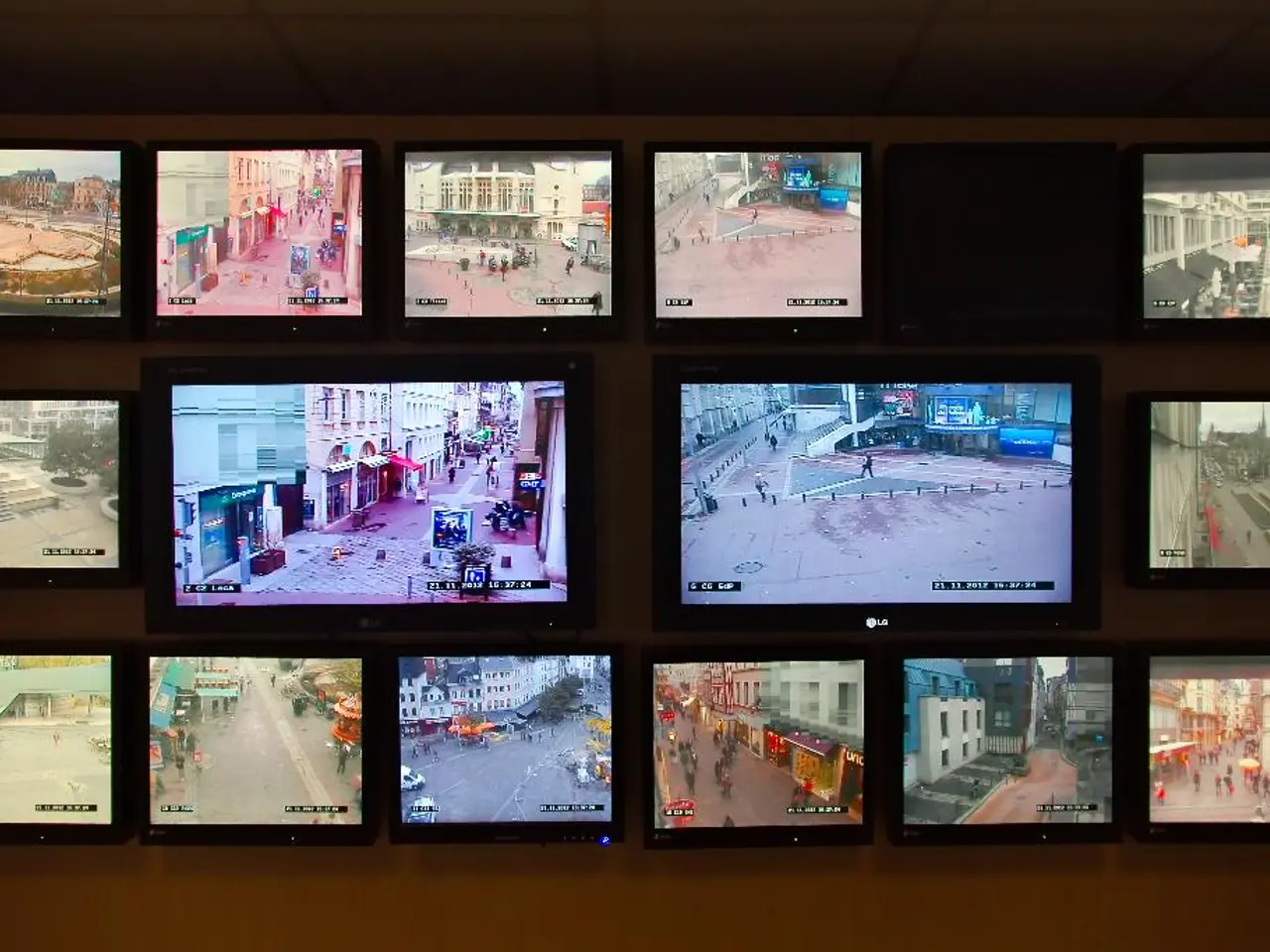Decrease in Streaming VOD and Linear TV Usage Observed in North America According to Study This Year
In the first half of 2025, the streaming video industry has witnessed significant changes, according to NPAW's latest report on the state of the streaming video industry.
The report reveals that linear TV regional engagement is strongest in Europe, with the Middle East showing the greatest gains. Europe leads viewership with over 60 minutes per user per day, while the average time spent watching linear TV in North America decreased by 21% to 41 minutes over the same period.
When it comes to device engagement, TVs and Set Top Boxes dominate both linear TV and Video on Demand (VoD) viewing, accounting for over 87% of total viewership. This trend underscores the preference for larger screens for lengthy viewing sessions.
Global VOD quality improvements were observed, including better buffer ratio quality, shorter join times, and higher average bitrates. These improvements are driven by continued investments from broadcasters and OTT providers. However, global VOD engagement decreased compared to H1 2024, with both average playtime per user and titles per user per day showing slight dips.
The report also highlights the wider adoption of Smart TVs and Set Top Boxes as the devices of choice for viewers, particularly for long-format content. Quality metrics on these devices are greatly improved over H1 2024.
Ferran G. Vilaro, CEO and co-founder of NPAW, stated that improvements in quality Key Performance Indicators (KPIs) were observed globally, with Latin America, the Middle East, and North America showing the greatest gains.
The report underscores ongoing infrastructure investments improving streaming quality worldwide, shifts in device usage favoring larger screens, and the continued robust growth and revenue transition towards streaming services within the global video industry.
A major shift in revenue is projected from traditional broadcast and pay TV towards streaming. This trend underscores the imperative for broadcasters to accelerate streaming strategies amid declining traditional TV household penetration and rising broadband access.
In conclusion, the NPAW report provides valuable insights into the evolving streaming video industry, highlighting trends in device usage, quality improvements, and the ongoing transition towards streaming services.
- Infrastructure investments have been improving streaming quality worldwide, particularly in regions like Latin America, the Middle East, and North America, as revealed by the report.
- The broadcasters and OTT providers have been making continued investments to enhance video quality, resulting in improved buffer ratio quality, shorter join times, and higher average bitrates.
- The preference for larger screens is evident in the trend of viewers choosing Smart TVs and Set Top Boxes for lengthy viewing sessions, especially for long-format content.
- The streaming industry is undergoing significant changes, with linear TV regional engagement strongest in Europe, and the Middle East showing the greatest gains compared to other regions.
- The report indicates a dip in global VOD engagement, with both average playtime per user and titles per user per day displaying slight decreases compared to H1 2024.
- A major shift in revenue is projected from traditional broadcast and pay TV towards streaming services, highlighting the importance for broadcasters to expedite their streaming strategies in order to adapt to declining traditional TV household penetration and increasing broadband access.




